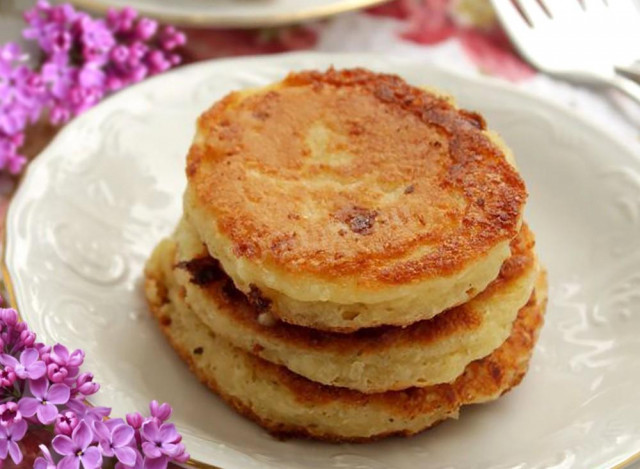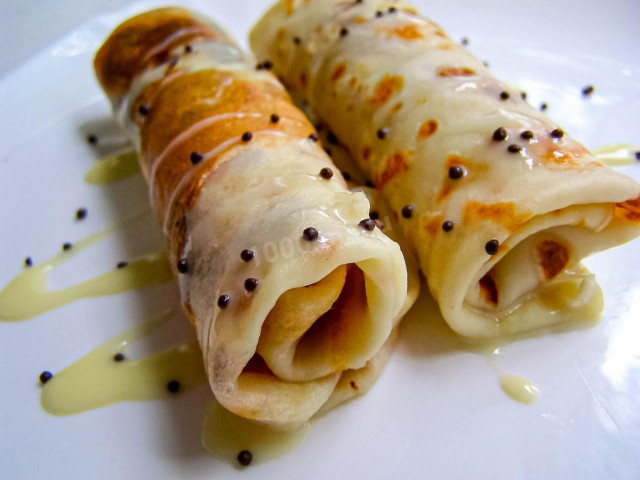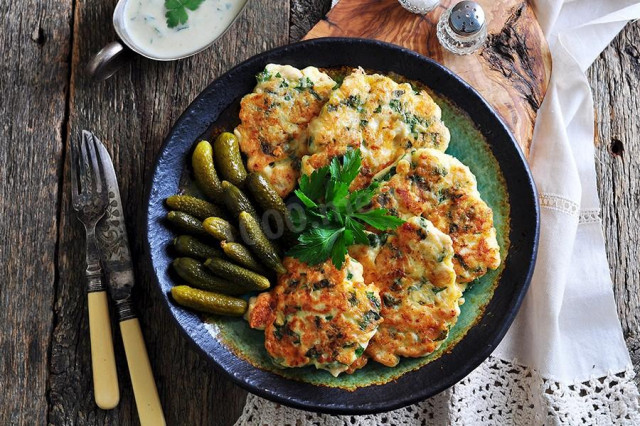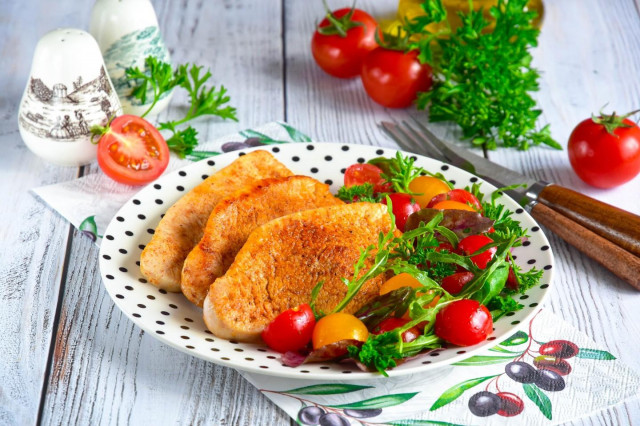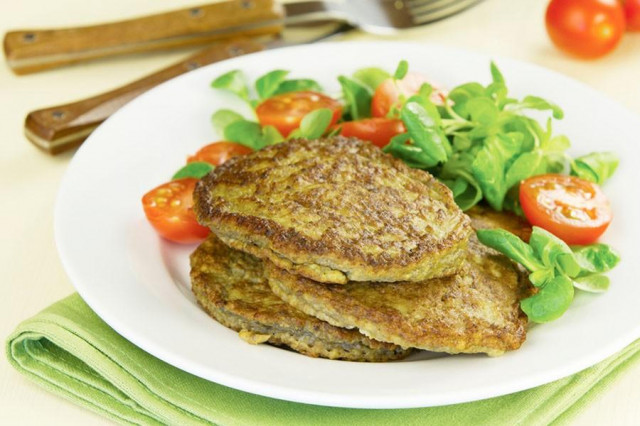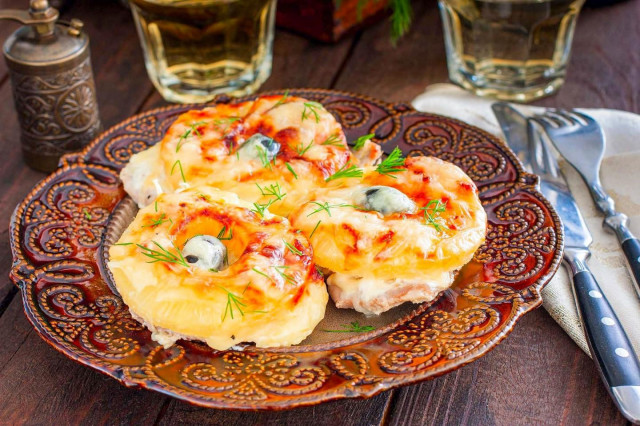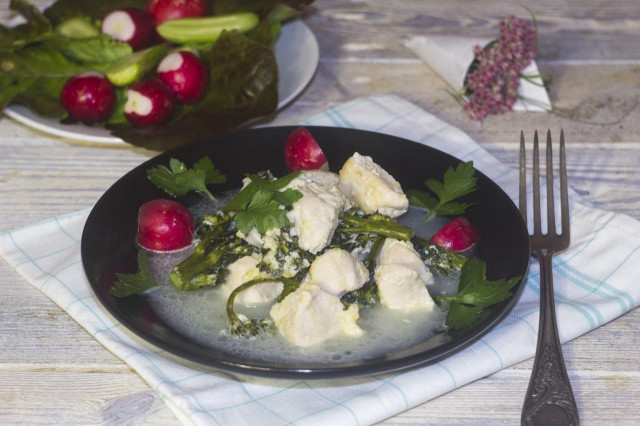Composition / ingredients
Cooking method
How to make cheesecakes with corn flour? The main difference between this recipe and the classic technology of making cheesecakes is the replacement of wheat flour or semolina with corn flour. Such flour has a beneficial effect on the human body, contributes to the normalization of digestion. In addition, corn flour is a good alternative for those who are on a gluten-free diet or just want to lose weight, as it does not contain gluten and is low in calories.
In order for the cheesecakes to turn out lush and airy inside, corn flour must be sifted through a sieve. And it is best to grind the cottage cheese through a metal sieve. To do this, you will need a bowl that needs to be placed under a sieve. Using a regular spoon or silicone spatula, press the cottage cheese, passing it through a sieve into a bowl located at the bottom. This procedure makes the cottage cheese more homogeneous, without any lumps, tender and at the same time crumbly.
Break the chicken eggs separately into a bowl and whisk them with a whisk until a fluffy white foam. Then pour the egg mixture into the grated cottage cheese and mix.
Pour the sifted corn flour into the curd mass and add a little sugar. Also put a little vanilla for a pleasant aroma and baking soda for pomp. Mix the resulting mass again to obtain a homogeneous structure.
Take a portion of the curd mass with a tablespoon and form a cheesecake with your hands. Then pour a little corn flour on the work surface and roll the formed cheesecake in it. In the same way, stick all the cheesecakes until the curd mass runs out.
Pour a little vegetable oil into the pan and heat it. Then put the molded cheesecakes in a frying pan and fry them over medium heat until golden brown. Then, using a spatula, turn them over to the other side, reduce the heat and cover with a lid. Fry the cheesecakes until golden brown and transfer to a plate covered with a paper towel to absorb excess oil.
Ready-made cornmeal cheesecakes can be served with sour cream, jam or honey!
Bon appetit!
Important! In order for the curd dough or filling to be successful, it is important to carefully consider the choice of cottage cheese. A low-quality product can spoil baking, as it directly affects the consistency, taste and final result. How to choose the right cottage cheese for dough or filling read in this article .
Any oils are useful only until a certain temperature is reached - the point of smoking, at which the oil begins to burn and toxic substances, including carcinogens, are formed in it. How to determine the roasting temperature and choose the best oil for frying, and which is better not to use at all, read here .
Important! An incorrectly selected frying pan can ruin even the best recipe. All the details on how to choose the perfect frying pan for different dishes read here .
Caloric content of the products possible in the composition of the dish
- Cottage cheese of 40% fat content - 466 kcal/100g
- Cottage cheese of 20% fat content - 233 kcal/100g
- Cottage cheese of 18% fat content - 226 kcal/100g
- Cottage cheese of 10% fat content - 156 kcal/100g
- Low-fat cottage cheese - 75 kcal/100g
- Cottage cheese with sour cream - 260 kcal/100g
- Fruit cottage cheese - 147 kcal/100g
- Soft dietary cottage cheese - 170 kcal/100g
- Vitalinia cottage cheese - 64 kcal/100g
- Cottage cheese "morning" ( "danone") without sugar - 91 kcal/100g
- Cottage cheese - 156 kcal/100g
- Granulated sugar - 398 kcal/100g
- Sugar - 398 kcal/100g
- Vegetable oil - 873 kcal/100g
- Vanillin - 288 kcal/100g
- Baking soda - 0 kcal/100g
- Chicken egg - 80 kcal/100g
- Corn flour - 368 kcal/100g
- Whole grain corn flour, unseeded - 355 kcal/100g
- Whole grain corn flour sifted - 362 kcal/100g
- Corn flour from grain with removed germs of vitamin E - 364 kcal/100g
- Corn flour from grain with removed germs nevitaminiz - 364 kcal/100g

